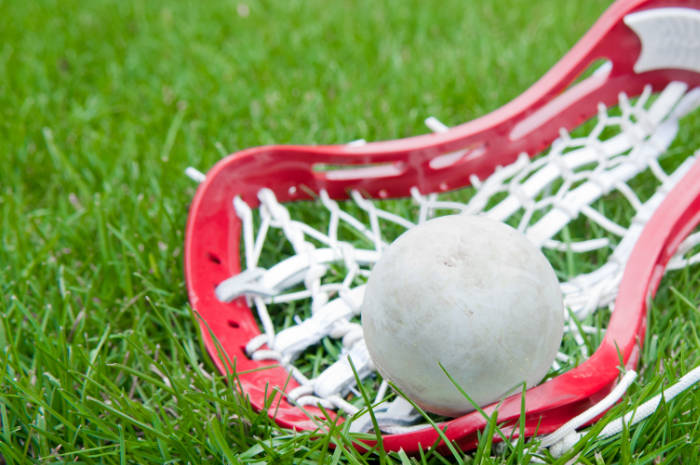In lacrosse, we sometimes miss passes or the draw and will have to fight for the ball on the ground; these are called groundballs. Groundballs are a pretty important statistic to keep in mind. Many times the same team that controls the groundballs is the same team that typically keeps possession of the ball for the majority of the game. It’s important to use the correct form in order to avoid fouls such as covers. Using the right technique can also mean scooping up groundballs faster and more efficiently, so make sure to practice!
Body Positioning During Groundballs
There is a correct way to picking up a groundball in lacrosse. An incorrect form can lead to you pushing the ball around the field or even a foul. In order to quickly scoop up the groundball, you’ll need to first plant your foot next to the ball. This will most likely be the foot that matches your dominant hand. If you’re right-handed, you’ll be leading with your right foot. It also helps to time out the planted foot with the rhythm of your running. Quickly plan it out so that your stride ends with you planting your foot. Once your foot is planted, you’ll need to get close enough so that your head is almost directly over the ball. Getting this close will mean you have more control. If you try picking up a groundball from a further distance, you’ll end up pushing it around like a lawnmower. Not only will this increase the chances for the other team to grab it from you, it always wastes a lot of energy. Picking up the ball efficiently can mean getting the ball to the goal faster.
Once your stick slides under the ball, immediately bring your stick up to normal level. You should be bouncing up as quickly as possible so that you can start cradling right away. Picking up the ball and going directly into a cradle should be one movement. The basic body step-by-step should be: sprinting to the ball on the ground, once you get there plant your foot, hover over the ball so you’re close enough to scoop it easily, come up as quickly as possible so that you may start running again.
Stick Positioning During Groundballs
After you’ve got the body positioning down, focus on the stick placement. You and the stick should be working completely together; these are the moments where having good stick skills and being comfortable with it will really pay off. As your foot plants next to the ball, drop your stick so that it’s parallel to the ground; your knuckles should practically be touching the ground. Having the stick this low will ensure that you won’t cover the ball or miss it. Once your stick is low enough, with quickness and sharpness slip the crosse under the ball. Then, as we said before, as soon as you’ve picked up the ball, come back up into the cradle position so that you maintain control of the ball as you run out of the scuffle.
In terms of hand placement on the stick, I found it much easier to pick up groundballs when my top hand was just below the head. This ended up looking like one hand was at the very bottom, while one hand was at the very top of the shaft. Sometimes the ball would fling upward if my top hand placement was too low, or if I kept it in the middle. There was not enough control for me to safely go into a cradle right away. So I tried a few different placements until I found the one that was comfortable for me and helped with control. Try practicing groundballs with different hand placements to see what works for you.
Groundballs Wrap Up
Groundballs definitely take practice and they’re definitely important, so it’s a good idea to get comfortable with them. Correct technique is vital; make sure to get low! If you think you’re low enough, you could probably drop lower than that. The main thing to keep in mind, however, is that you should really fight for those groundballs! Even if you haven’t mastered the form yet, don’t give up. Sprint for any missed passes and fight during those tussles! When you get down to it, that’s how you truly win groundballs.

